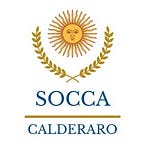Because the field of semiotics covers quite a diversity of signs, Umberto Eco has developed a classification in which he distinguishes between artificial and natural signs. Natural signs are divided into two classes: (1) signs identified with natural events or things (for example, the position of the sun); and (2) signs unintentionally produced by a human agent (for instance, a rash indicating chickenpox). A similar division is made for artificial signs, which are either (1) intentionally produced in order to signify (the barking of a dog, for example), or (2) intentionally produced as a primary function (for example, a chair for sitting), a secondary function (a diamond necklace for wealth), or a combined function (a police uniform, which serves both to cover and to indicate a social function).
Life Magazine has been the perfect reservoir for semiotics. As we can learn from the following article at Princeton University. Enjoy …
From the Great Depression to the Vietnam War, the vast majority of the photographs printed and consumed in the United States appeared on the pages of illustrated magazines. Offering an in-depth look at the photography featured in Life magazine throughout its weekly run from 1936 to 1972, this exhibition examines how the magazine’s use of images fundamentally shaped the modern idea of photography in the United States. The work of photographers such as Margaret Bourke-White, Larry Burrows, Henri Cartier-Bresson, Frank Dandridge, Gordon Parks, and W. Eugene Smith is explored in the context of the creative and editorial structures at Life. Drawing on unprecedented access to Life magazine’s picture and paper archives, as well as photographers’ archives, the exhibition presents an array of materials, including caption files, contact sheets, and shooting scripts, that shed new light on the collaborative process behind many now-iconic images and photo-essays.
A fully illustrated catalogue, which won the 2020 Alfred H. Barr Jr. Award, College Art Association, is available through the Museum Store.
Life Magazine and the Power of Photography has been organized by the Princeton University Art Museum and the Museum of Fine Arts, Boston.
Life Magazine and the Power of Photography is made possible by lead support from Jim and Valerie McKinney. Generous support is also provided by the Humanities Council’s David A. Gardner ’69 Magic Project, Princeton University; Sandy Stuart, Class of 1972, and Robin Stuart; the National Endowment for the Arts; and the Allen R. Adler, Class of 1967, Exhibitions Fund.
Additional supporters include John Diekman, Class of 1965, and Susan Diekman; M. Robin Krasny, Class of 1973; Christopher E. Olofson, Class of 1992; William S. Fisher, Class of 1979, and Sakurako Fisher through the Sakana Foundation; the Sara and Joshua Slocum, Class of 1998, Art Museum Fund; David H. McAlpin Jr., Class of 1950; Nancy A. Nasher, Class of 1976, and David J. Haemisegger, Class of 1976; Tom Tuttle, Class of 1988, and Mila Tuttle; the New Jersey State Council on the Arts, a partner agency of the National Endowment for the Arts; the Frederick Quellmalz, Class of 1934, Photography Fund; Bob Fisher, Class of 1976, and Randi Fisher, and the Brown Foundation Fellows Program at the Dora Maar House.
The accompanying publication is made possible in part from the Barr Ferree Foundation Fund for Publications, Department of Art and Archaeology, Princeton University; the Joseph L. Shulman Foundation Fund for Art Museum Publications; Annette Merle-Smith; and the Wyeth Foundation for American Art.
